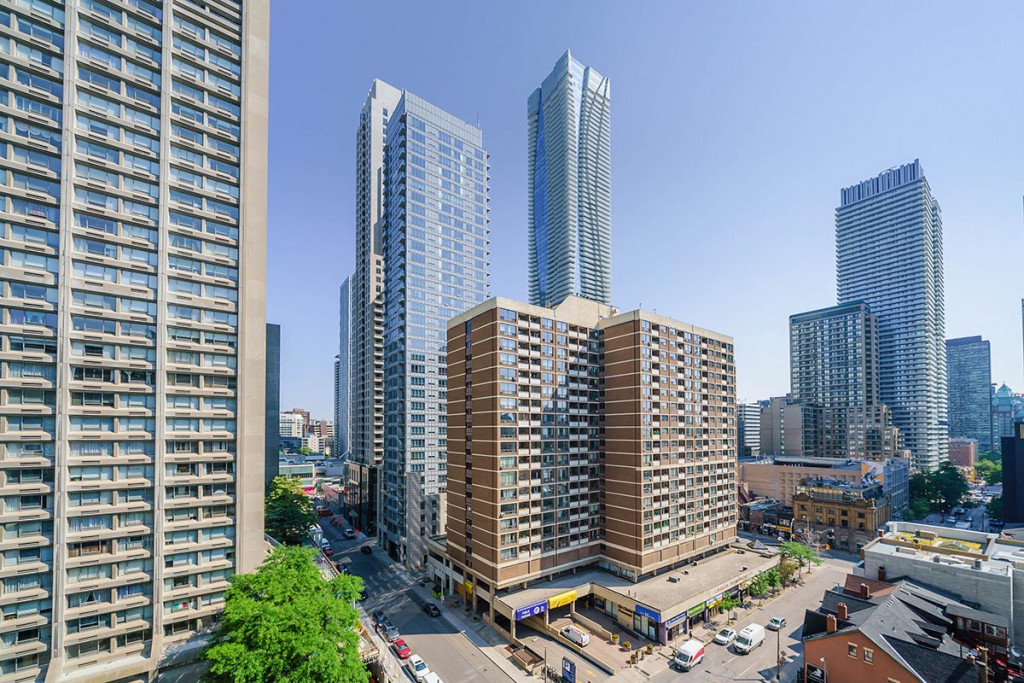Charles Street
Pest Control
Unfortunately, pests are a persistent challenge in downtown Toronto, and UFH is no exception. Successful pest control is a partnership between UFH building operations and the resident. Residents are supported during this process, but play a critical role in effective pest management.
If pest control treatment is deemed necessary, it is mandatory for the resident to participate in the program to eradicate said pests.
Building-Wide Pest Management
UFH conducts regular building-wide and targeted-area treatments, including:
- Garbage rooms
- Compactor rooms
- Garbage chutes

prevention and treatment
Types of Pests

Prevention
- Kitchen Cleaning
- Keep your stove and fridge clean and periodically move and clean behind appliances
- Wipe up any grease and crumbs from cooking immediately
- Store food in sealed plastic or glass containers, not cardboard boxes
- Use a trash bin with a tight lid and take it out daily
- Avoid leaving dirty dishes or pet food out overnight
- Moisture mitigation
- Wipe down any moist surfaces in the kitchen or bathroom; cockroaches are drawn to water
- Plug your kitchen and bathroom drains when not in use
- Remove clutter
- Favored breeding grounds include cardboard boxes, books, and papers.
Additional information is available from the Government of Canada.
Treatment
- Spray Treatment: DEMAND ® CS Insecticide is sprayed around the baseboards of the entire unit or in the kitchen and bathroom exclusively. Industry standards recommend you leave the apartment for 4 hours. However, if you have sensitivities or other health concerns you may choose to extend the vacate period for several more hours. Any animals/pets must also vacate the unit. The treatment is effective for approximately 3 weeks.
- Note: Right after your apartment is sprayed, you may notice more roach activity as they search for a way out of the apartment to avoid being killed by the spray.
- Gel Treatment: Gel Pest Treatment is placed in the kitchen, bathroom, and around the door frame in out of reach locations. The product used for treatment is odourless and considered very safe and has no effect on those who suffer from allergies or respiratory problems.
Pre and Post-Treatment
- Pre-Treatment: Units must be thoroughly cleaned prior to any pest control treatment. Remember, the better the preparation, the better the result. Additional preparation depends on treatment type:
- Post-Treatment: Cockroach eggs may hatch even after a cockroach has been killed. As such, it is imperative to immediately dispose of any dead roaches you find in sealed double bags in the garbage chute or dumpsters.

Prevention
- The City of Toronto and the Government of Canada provide tips on prevention, identification, and cleaning.
Treatment
- Exclusion: Maintenance will plug any holes around pipes with steel wool, paying particular attention to the area around radiators, to prevent new mice from entering the apartment
- Bait in Tamper Proof Stations: Tamper-proof bait stations are placed around the unit.
Pre and Post-Treatment
- Pre-Treatment: No additional prep beyond thoroughly cleaning your apartment is required.
- Post-Treatment: Use caution when near urine or droppings; wear rubber gloves a dusk mask during cleanup and dampen any droppings or debris with a solution of bleach and water before wiping up.

Prevention
- Install a balcony net as soon as possible.
- Residents are responsible for installing a balcony net. DIY pigeon netting is available at a variety of home hardware stores and the Better Business Bureau provides a list of contractors offering netting & pest bird exclusion services in Toronto. Consider getting at least three quotes before deciding on a contractor.
- The Residence Office will provide a free balcony cleaning if you have installed a net to prevent the problem.
- Keep your balcony tidy and free of waste.
- Do not store food or other household items on your balcony.
- Do not feed the pigeons.
- For more tips see the Government of Canada or Toronto Wildlife Centre websites

Prevention
- Toronto Public Health and the Government of Canada provide tips of prevention, identification, and physical control methods.
- The Residence Office may provide glue traps to help detect bed bugs. Please note this is not a form of treatment, it is used only to detect if there is a problem.
Treatment
- Spray Treatment: DEMAND ® CS Insecticide is sprayed around the baseboards of the entire unit or in the kitchen and bathroom exclusively. Industry standards recommend you leave the apartment for 4 hours. However, if you have sensitivities or other health concerns you may choose to extend the vacate period for several more hours. Any animals/pets must also vacate the unit. The treatment is effective for approximately 3 weeks.
Pre and Post-Treatment
- Pre-Treatment: To prepare for treatment, please follow these instructions.
- Post-Treatment: Look for and collect any live/dead bugs, molting or eggs or fecal matter and place them in a tightly sealed container (e.g., baby food jar, prescription/vitamin bottle, etc.) before disposing of them directly in the bulk garbage bins.
Pest Control
Policies & Reminders
- Transfers are not granted based on pest control issues nor are refunds or reduction of residence fees.
- If you have had pest activity in your home, please do not donate items to the Free Store to prevent the spread of pests.
- Pest infested furniture should be wrapped in plastic and taken directly to the bulk garbage area for disposal. Dead pests, eggs, or fecal matter should be double bagged, tightly tied, and disposed of directly in the bulk garbage bins.









